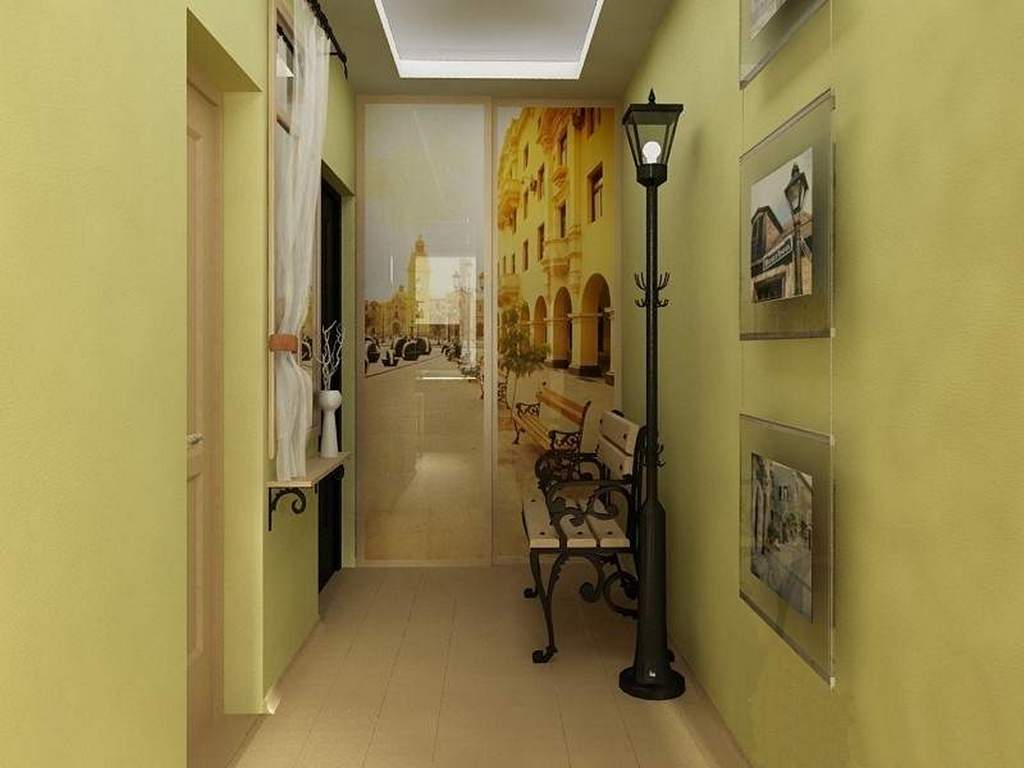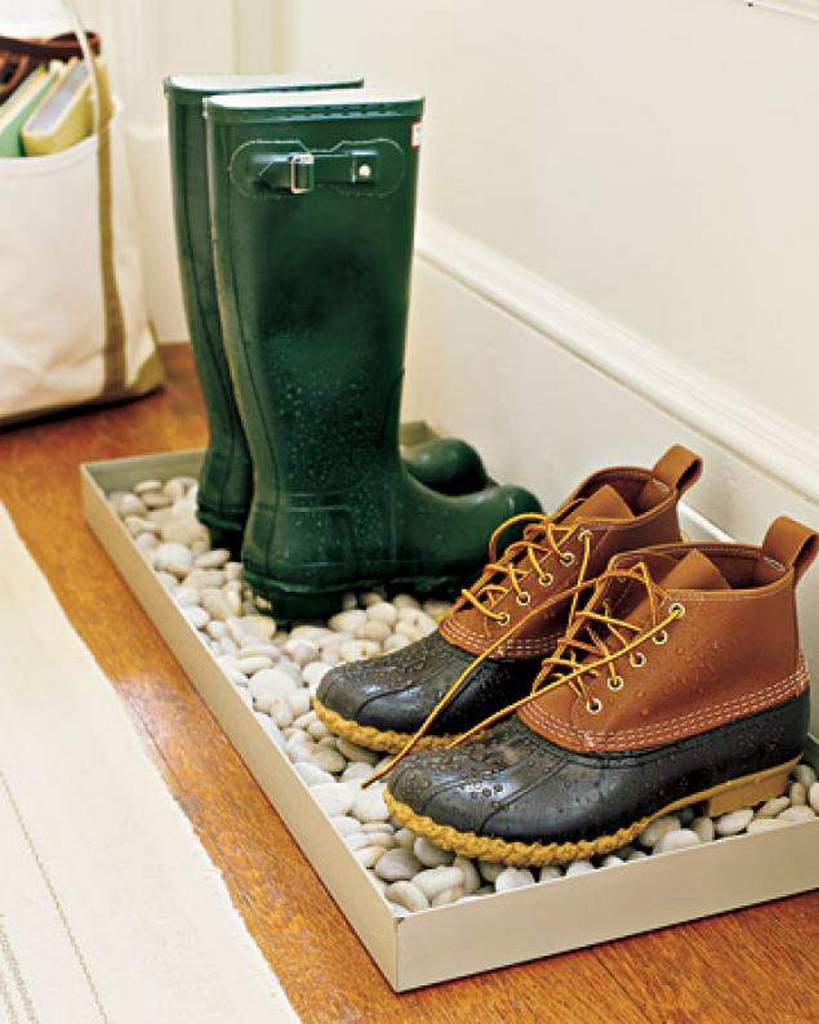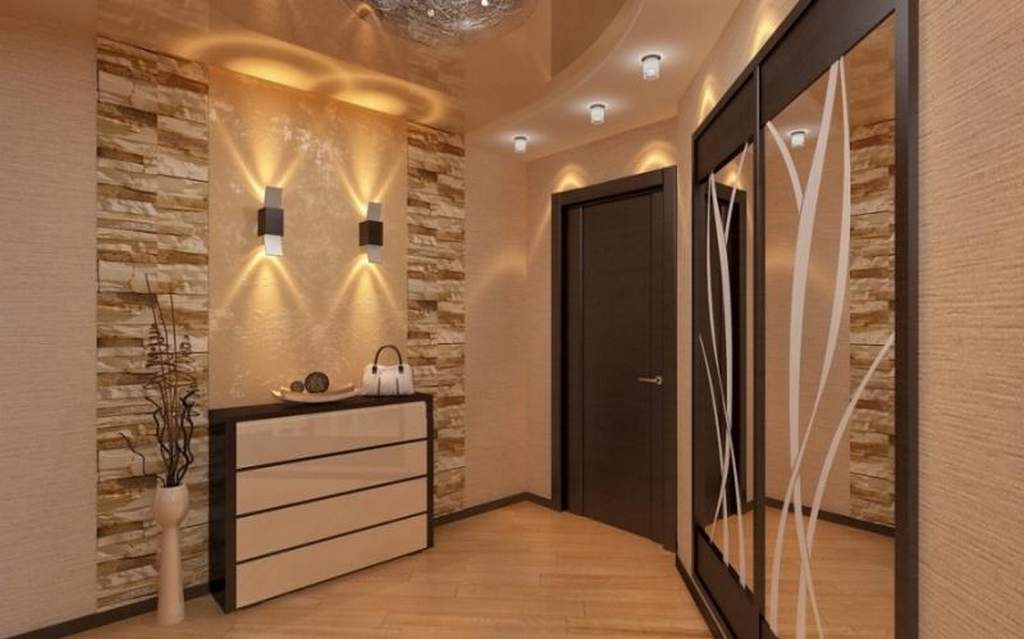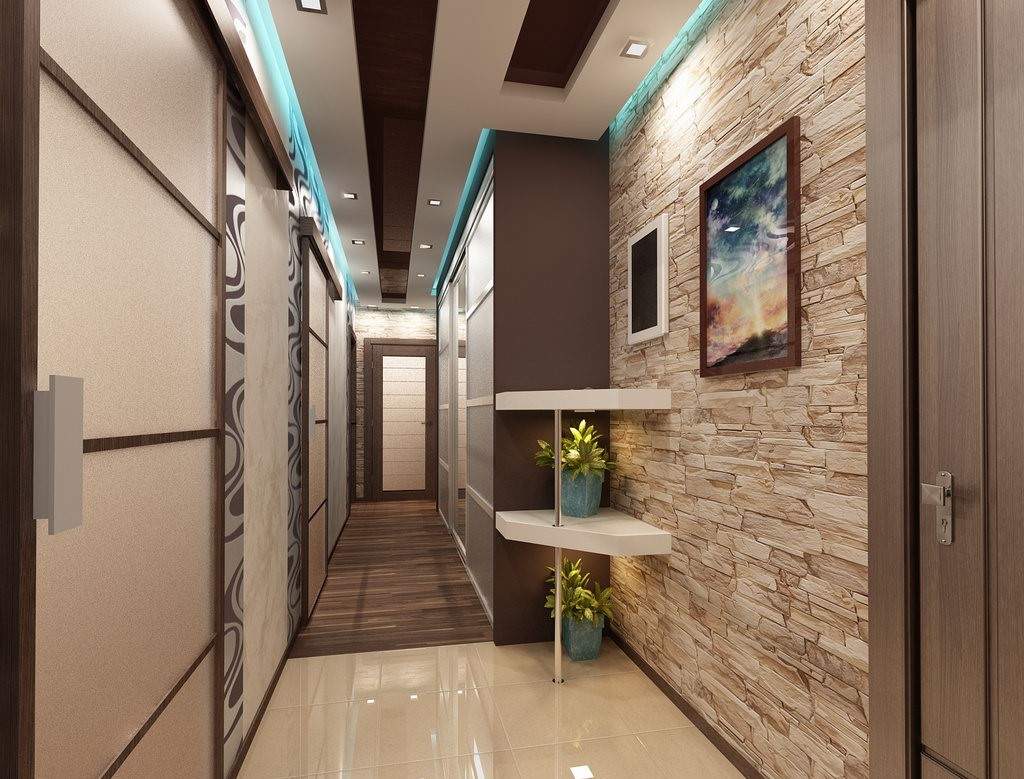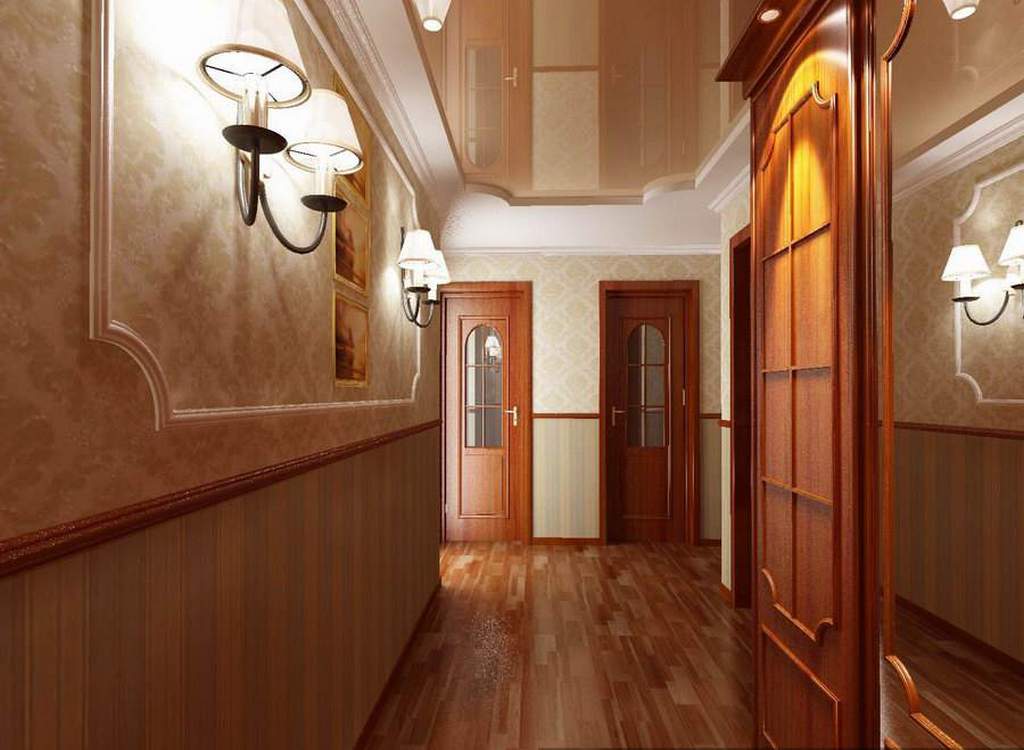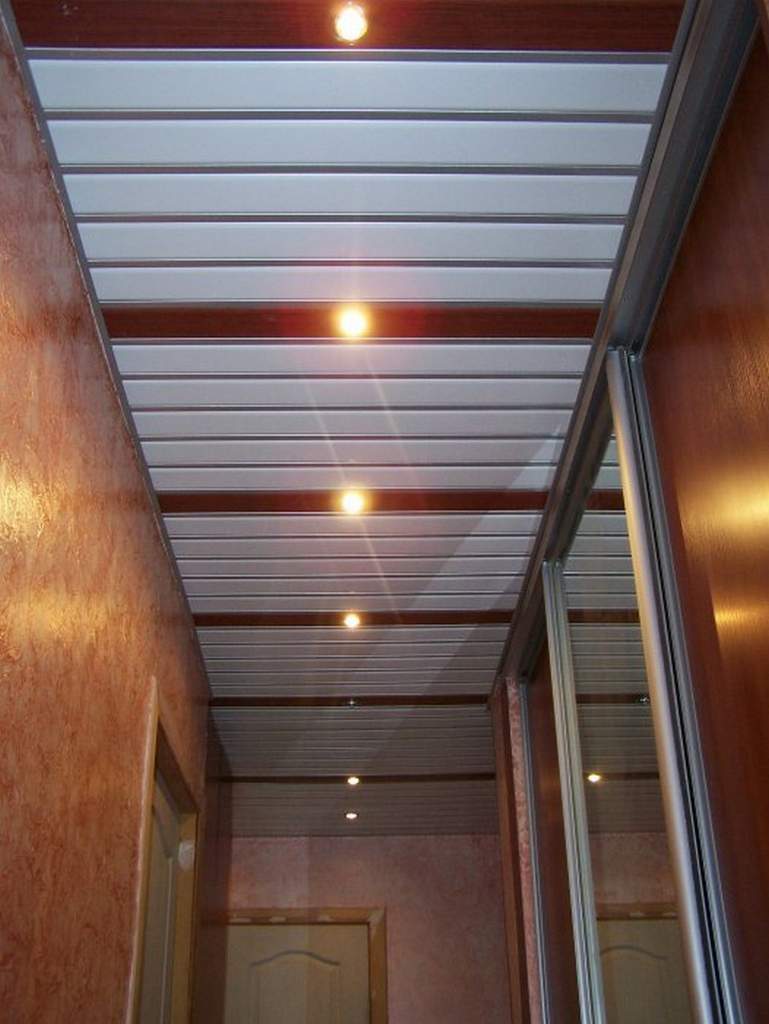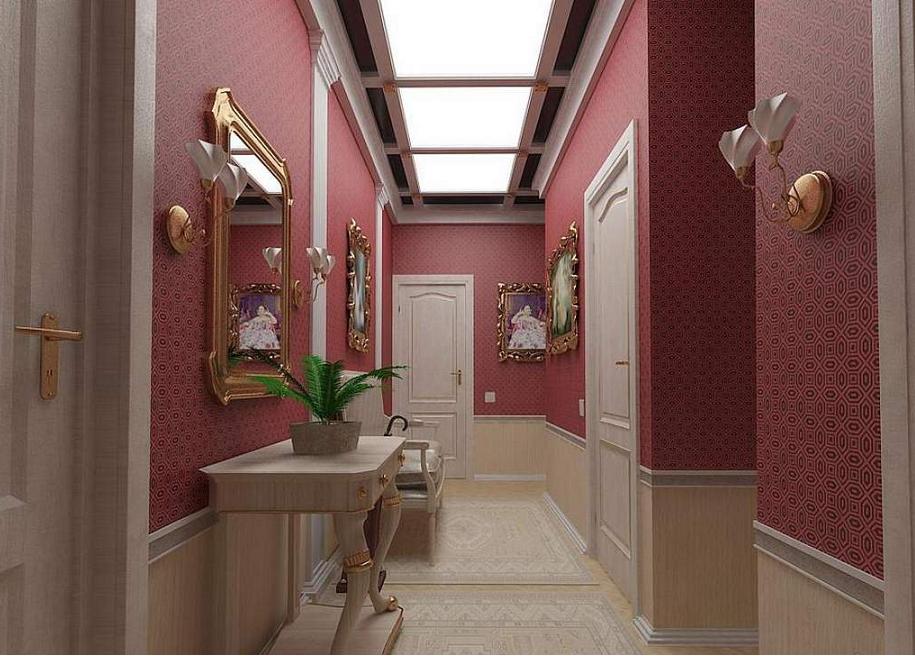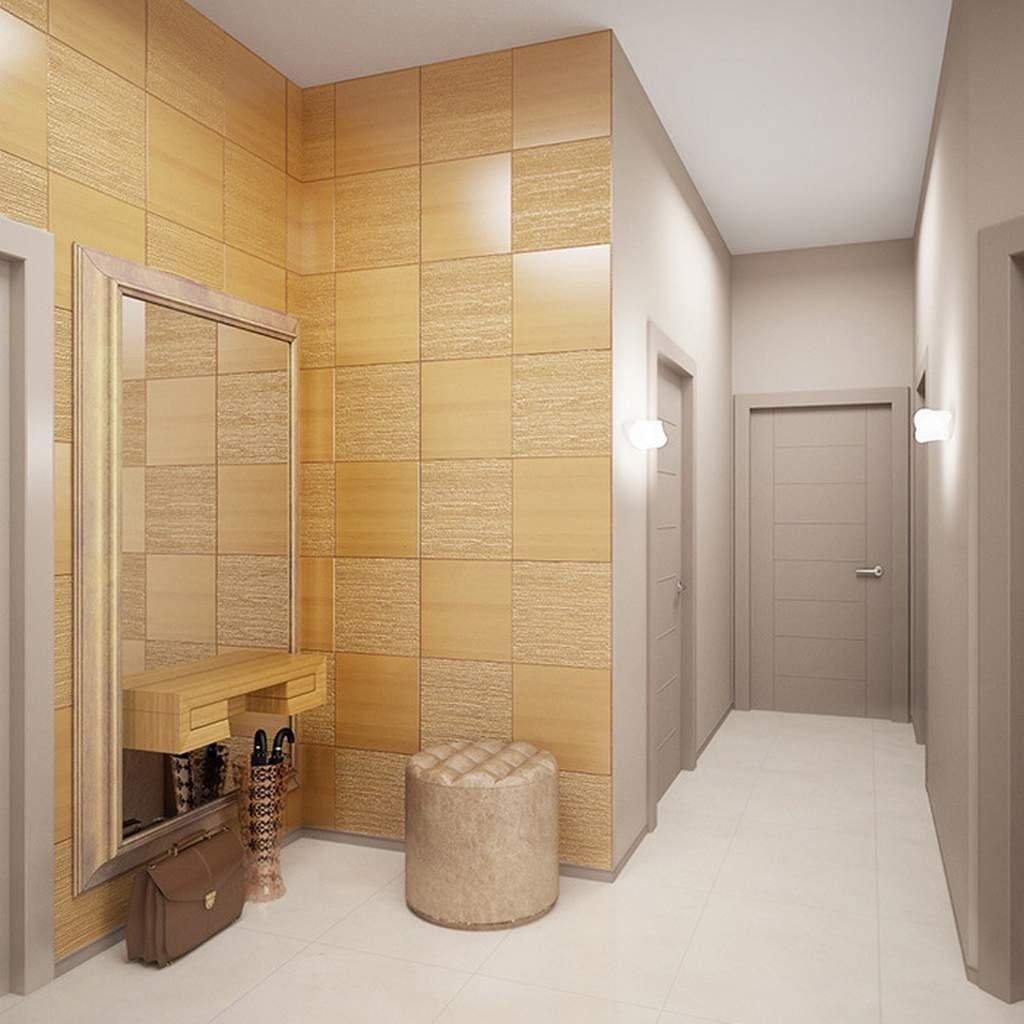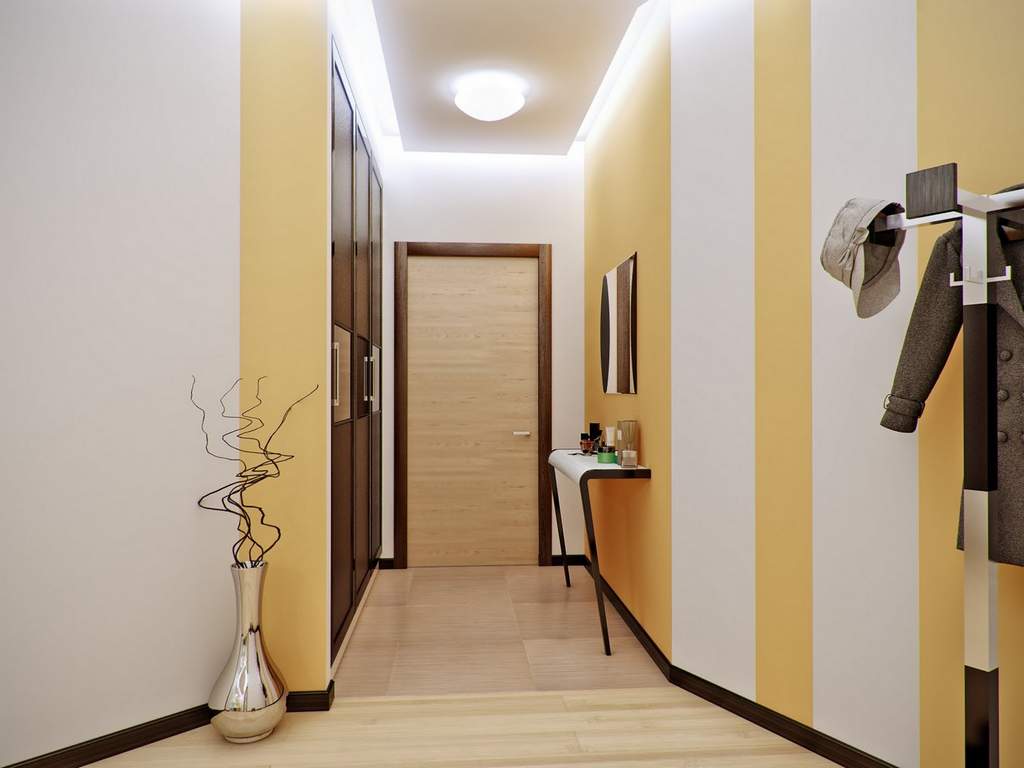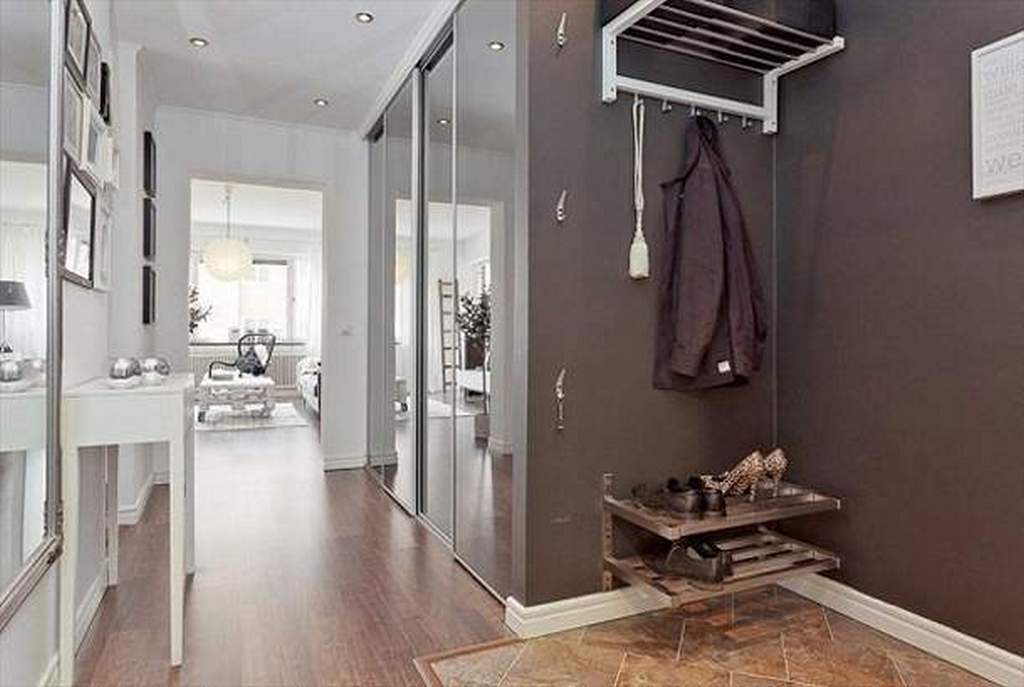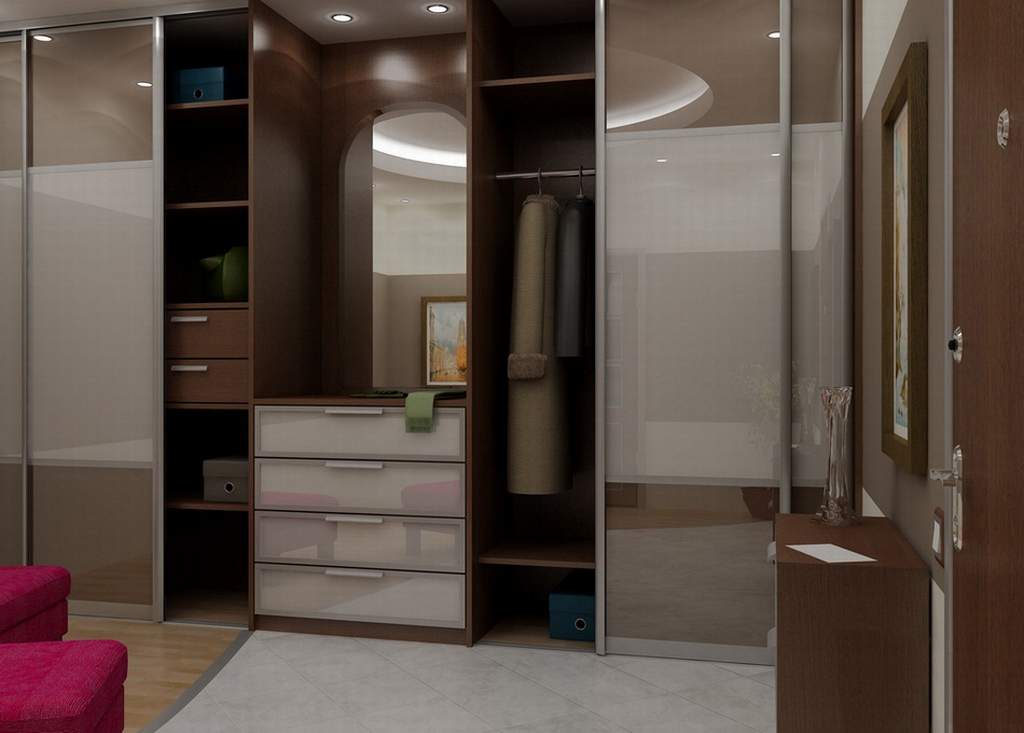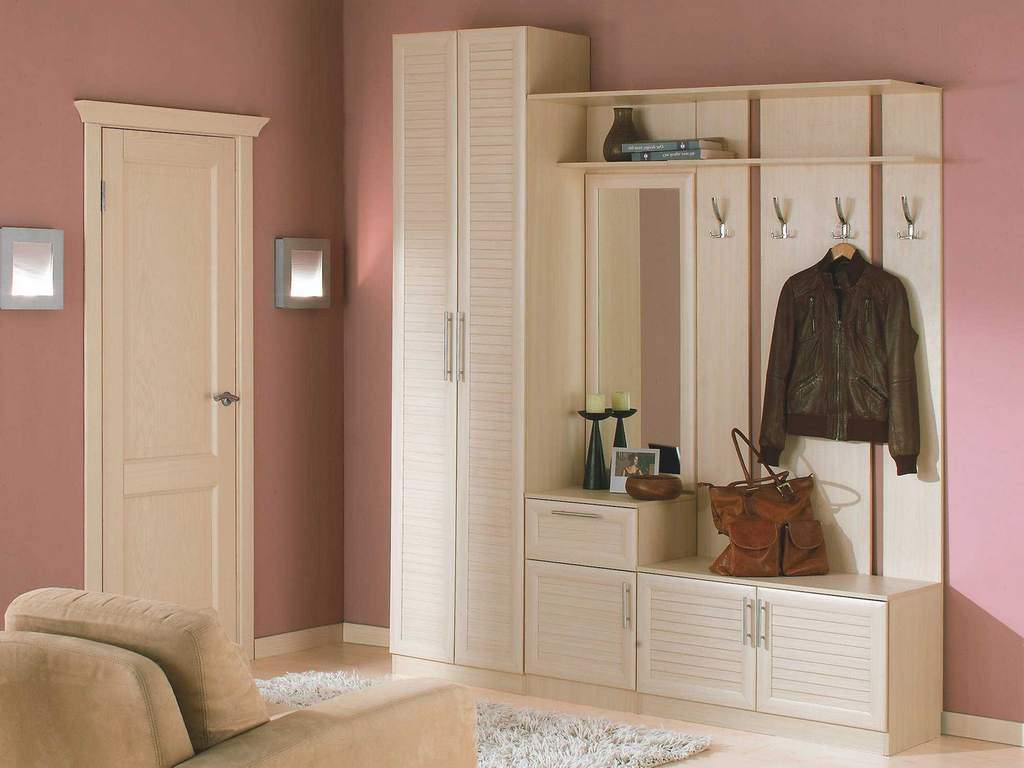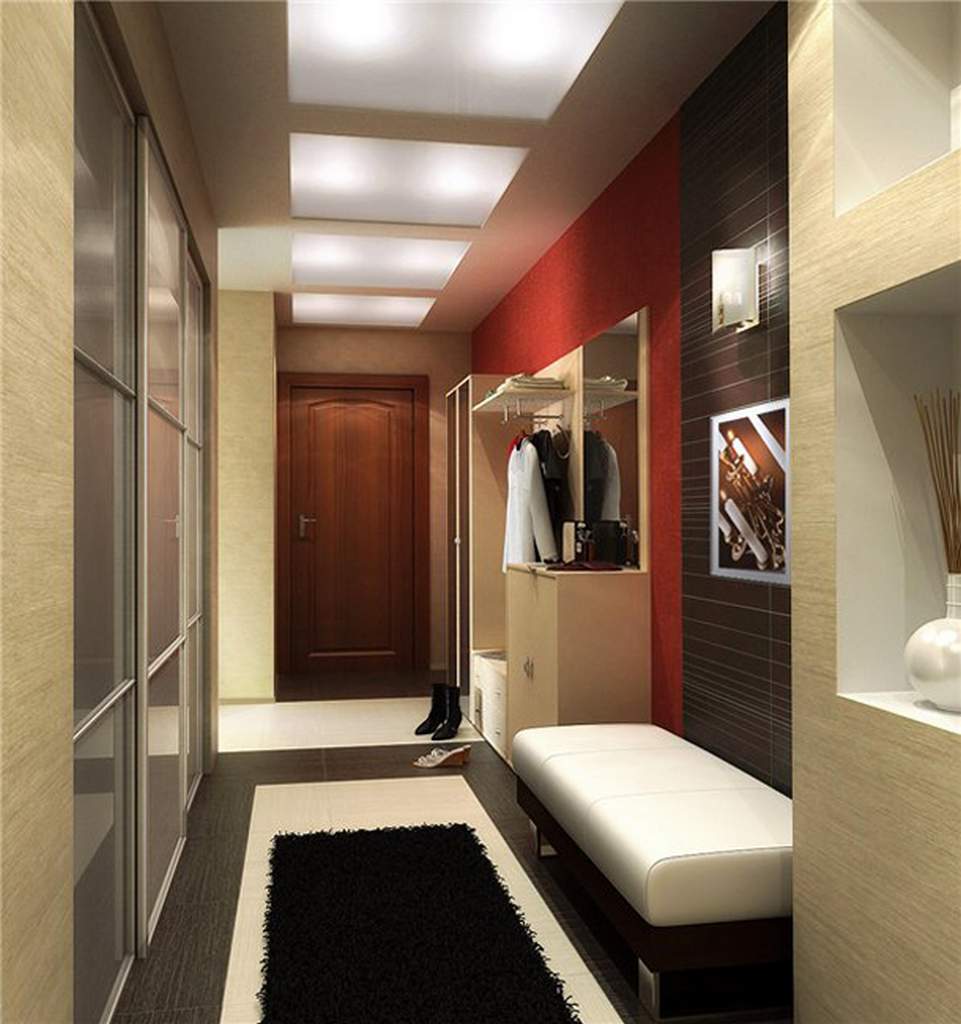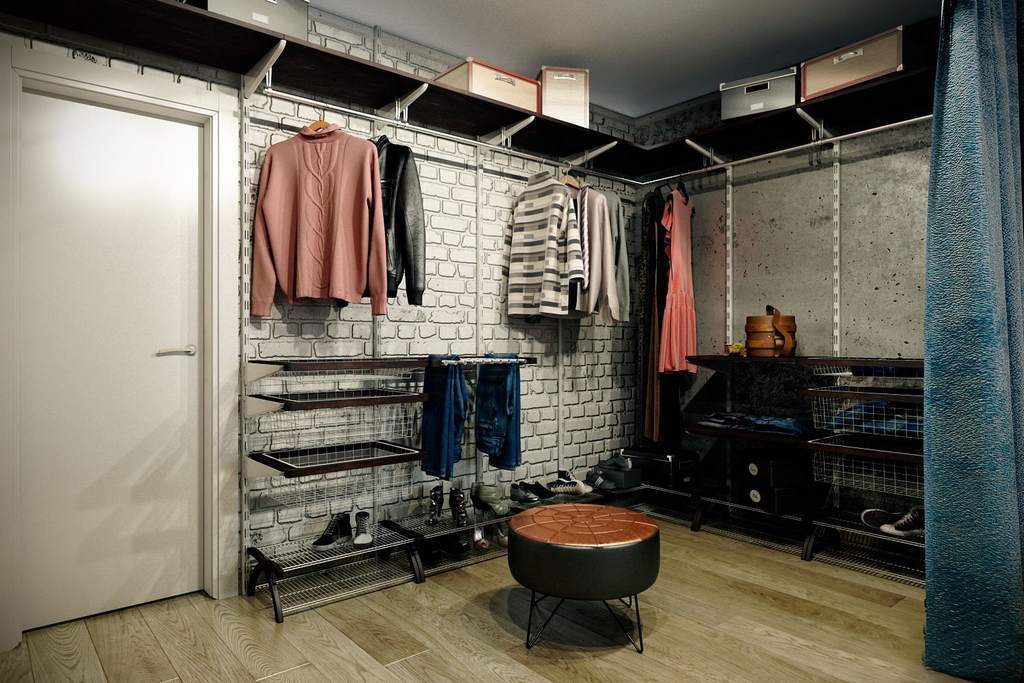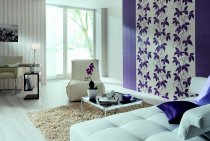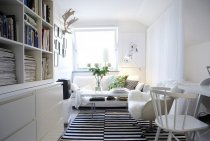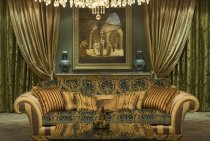The corridor, it would seem, is the simplest and most unpretentious room, but how can it be linked with the overall design of housing? After all, it is from this room that the apartment begins, and its interior determines the first impression of the taste and prosperity of the owner. In fact, do-it-yourself hallway repair is almost the same as the decoration of any room. The only thing that must be kept in mind in this case is the so-called problem zones of the corridors.
hallway features
The first thing that comes to mind for any inhabitant is the lack of natural light, several doorways. These are the most common problem areas in corridors in apartments. The room itself can have a variety of sizes and configurations: from a standard narrow room to spacious hallways of a rectangular, polygonal or semicircular shape.
There are a number of other features inherent in this room:
- Large load on the floor at the entrance, from the impact of heels to skates. Moving various goods, from shopping bags to furniture.
- Increased dirt flow.
- Moisture exposure. After rain, some of the water from clothes and shoes gets into the corridor.
- There must be a place to take off and hang outerwear.
It is clear that the repair of the corridor is the final stage of finishing the entire apartment. It is important to try to organically fit it into the overall interior of the housing.
Lighting
This is one of the main problems of the hallways. The lack of natural light sources makes this room dark and uncomfortable. So lighting in the hallway should be bright, saturated. It will fill the corridor with comfort.
Hallway lighting can be organized using a classic lamp, LED panels, spotlights. Additional sources are widely used: sconces, lamps, LED strips for zoning.
Consider techniques for a narrow and long room, which is usually the hallway in most apartments.
- Combination of light sources. It can be a chandelier and lamps or an LED strip located under the plinth - ceiling or floor.
Do not use large fixtures and lamps, they reduce the already modest room.
- Mirror lighting. This idea extends geometry through perspective.
For a rectangular entrance room, you can not limit yourself in design ideas. Depending on the ceiling height and style, any light sources are selected, but there should not be too many selected types. Most often, the interior of a rectangular room involves zoning, including with the help of lighting.
Ceiling Ideas
Lighting in the hallway and ceiling decoration are interconnected. What materials can be used for the corridor? The hallway ceiling can be made in the following variations:
- Whitewash. The method is relevant for low corridors. It doesn't eat up precious space. This method is not cheap. Especially in apartments where floor slabs are laid unevenly and thorough leveling with plaster is required.
- Drywall. Allows you to hide the insulation, communications. Minus - eats up space in height by at least 50 mm.
- Stretch ceiling. One of the most popular options, and deservedly so.
- Rack. Such a ceiling will expand the space of a small room well if the slats are placed across the length. Materials for such decoration: lining, metal slats, PVC panels, MDF.
- Wallpaper, decorative plaster. Eat a minimum of ceiling space.
The listed ideas for decorating the ceiling space can be combined.
If we consider options for a narrow long room, then you should not choose:
- Bulky designs. They will create a feeling of pressure from above.
- Stretch ceilings are glossy and mirrored. They will increase not only the height, but the length.
For a rectangular, square, semicircular shape of the corridor, all types of materials and different combinations of them can be considered.
The choice of ceiling covering depends on several factors: the height, dimensions of the room, the selected type of lighting.
Walls
Given that the corridor is an area subjected to serious mechanical stress, as well as pollution, finishing materials should be selected appropriate:
- Wallpaper. Classics of the genre. Washable ones are recommended. If regular ones are planned, then it is better to give preference to smooth without texture. Walls decorated with such material will fit into any chosen design style.
- PVC panels. On the one hand, this material is easy to care for, on the other hand, it is fragile. And given the aggressiveness of the environment, you should think about the relevance of such wall decoration in the corridor.
- MDF, lining. This material is durable and practical, but is mounted using a frame that eats up part of the usable area.
- Decorative plaster. The texture is especially relevant, since if necessary it can be repainted in any other color. If a finishing layer of varnish or wax has been applied, then such coatings are easily washed from contamination.
- Decorative rock, brick. Walls finished with such material look very impressive.
When decorating walls in narrow corridors, their own special rules apply:
- Visually expand the geometry with a diagonal or horizontal pattern.
- You should not use a large amount of decor, you should strive for minimalism.
- Using mirrors is a great idea to visually enlarge the space.
- For walls, it is not recommended to use lining, MDF, PVC panels, stone. The first three materials will narrow the usable space due to the frame, and the stone visually reduces the volume of the room.
Do not forget that in small rooms the aggressive effect on the walls increases significantly, so you should choose materials that are resistant to abrasion or easy to clean.
When decorating the walls of corridors of a rectangular configuration, various "chips" from the design area can be used. For example, zones can be finished in different colors or using a combination of different materials.
Color design
As a rule, the interior of the corridor is performed in light shades of gray, cream, purple, light green, blue. This helps to make the room more spacious and bright. A combination of several shades is acceptable.
It is better to decorate a narrow room in light colors, but for a rectangular hallway, you can use such a design technique as color zoning.
floor in the hallway
The floor covering must be resistant to aggressive influences. The most common options in the hallway and corridor are laminate and ceramic tiles. These coatings are easy to clean and have a sufficient level of abrasion resistance.
It is a good idea to use ceramic tiles in the area near the entrance and laminate, parquet board, linoleum - on the rest of the floor area. Thus, the most “dirty” zone will be protected as much as possible, and the rest will be decorated with the same material as the rest of the rooms in the apartment.
Furniture
Interior elements are selected in accordance with the size of the corridor. It can be spacious dressing rooms, and narrow cabinets.
Recently, preference has been given to built-in wardrobes. Their usable space is much larger than conventional ones. And the doors made of mirrors are the dream of any housewife, not to mention the fact that the mirror expands the space. Such furniture can have independent lighting.
Someone will object and say that this is not an option for small rooms.In fact, built-in furniture is just the way to eliminate the clutter of a narrow corridor. The width of the cabinet can be from 300–400 mm. In such furniture, hangers with clothes can be placed not sideways, but face down.
Along with built-in interior items, modular furniture is gaining popularity. It is also selected according to the dimensions of the room and the required usable space.
In a wide rectangular hallway, in addition to the dressing room, you can place a coffee table and sofas, armchairs, thus creating a mini-living room. This idea has been very relevant for the last 2 years.
Zoning of the hallway and corridor
For a corridor of narrow long geometry, it is better to divide the space into zones. To do this, fragment the walls, ceiling or floor. You can use simple tricks with lighting, divide the room with two carpet paths, or use ceiling structures.
Rectangular hallways give more room for design ideas. Such interiors are usually divided into the following zones:
- directly the entrance hall;
- wardrobe;
- reception.
Styles and decor
For large corridors, an abundance of decor and accents is relevant. The color solution can be expanded and applied not only pastel colors, but also dark shades.
An interesting design element of the corridor are illuminated niches in which beautiful decor items can be placed.
For a narrow entrance room, it is better to provide a style that borders on minimalism. Small rooms with an excess of decor and large interior elements visually narrow. Such design techniques look disadvantageous in narrow spaces.
The style should match the overall interior of the apartment. The corridor can contain the same decor elements that are used in the living room or even become its logical continuation.
Anyone can make a beautiful repair of the hallway with their own hands, it is important to remember the recommendations for choosing finishing materials and furniture. And the design will be dictated by previously decorated rooms.
